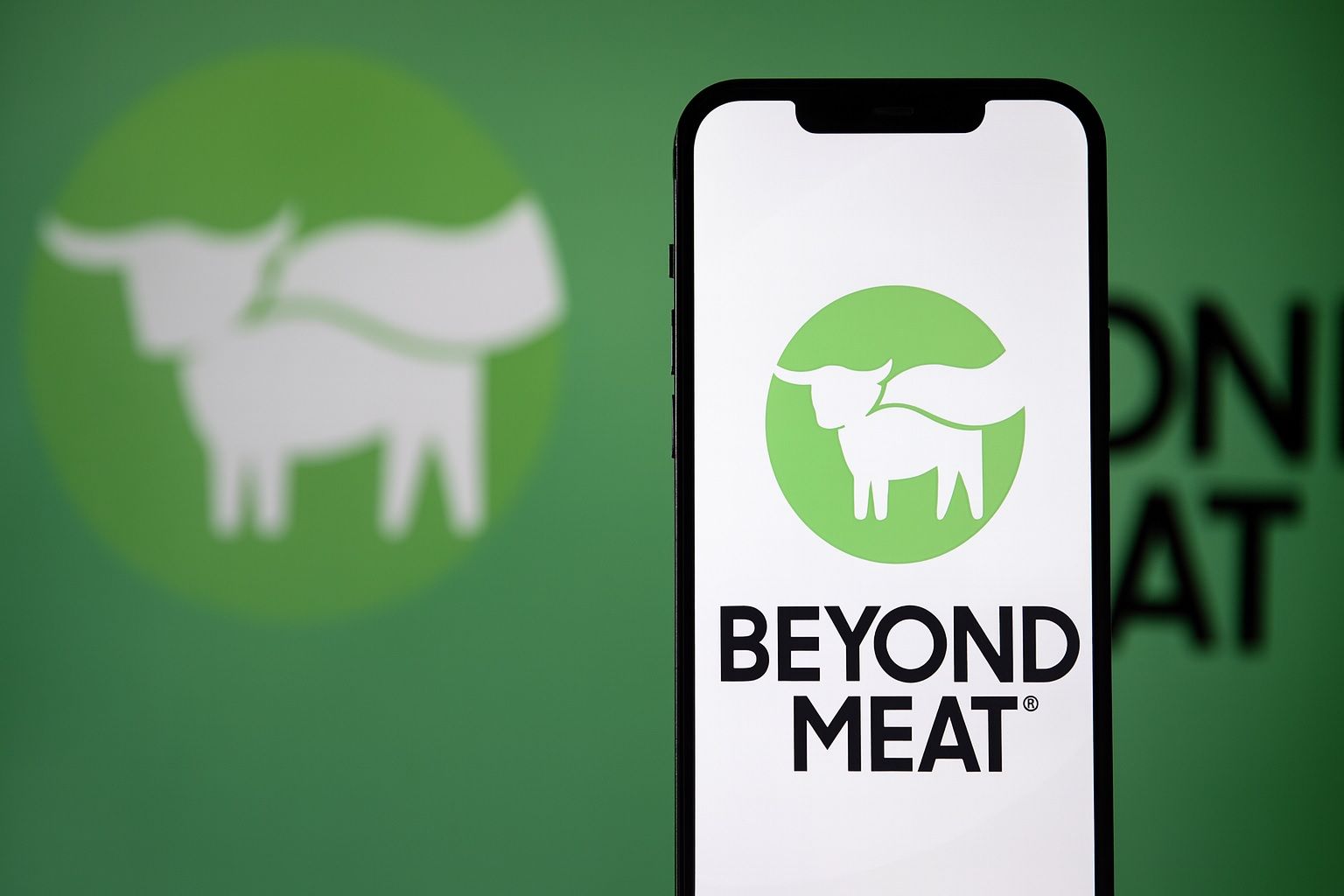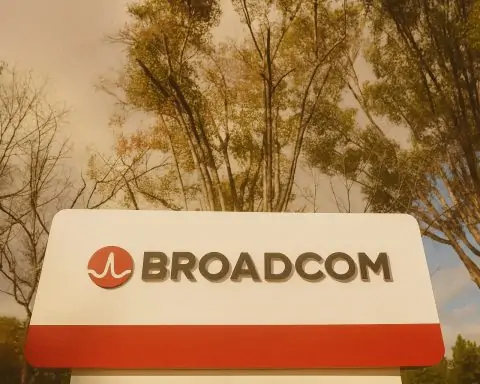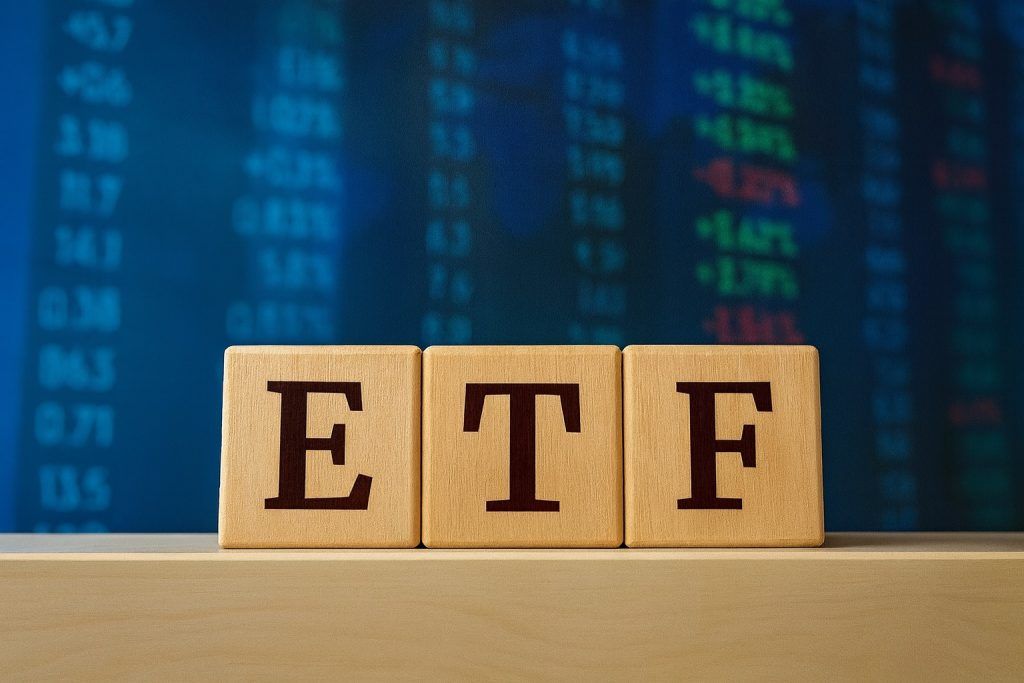$2.01 [1] – opened Oct 13 near $0.84 after a 60%-plus selloff [2] [3]. – Recent performance: ~–44% over 1 year [4]; 52-week high was ~$9.24 [5] (now far below). – Financials (Q2 2025): Revenue $75M vs $83.8M expected, EPS –$0.40 vs –$0.38, net loss $33.2M [6] [7]. Cash ~$117M, debt ~$1.2B [8]. – Debt deal (Oct 2025): ~96.9% of existing $1.15B convertible notes were tendered, triggering early settlement (issuing ~316M new shares and ~$196M of new notes) [9] [10]. – Market cap: ~ $150M (falling from multi-billion highs) [11]. – Analyst view: Consensus “Strong Sell”; 12‑mo target ~$3.00 (≈49% upside) [12]. Recent actions: BMO cut target from $5→$4 (Aug 14) and slipped to “market perform,” Argus cut to Sell (Sep 15) [13], JPMorgan started coverage as Underweight [14]. – Owners: ~52.5% held by institutions [15]; largest disclosed shareholder ~2.8% (Vontobel) [16].
Stock Price & Recent Performance
Beyond Meat shares have collapsed in late 2025. As of the Oct. 10 close, BYND was ~$2.01 [17], but plunged roughly 56–60% on Oct. 13 when news of an unprecedented debt-conversion deal hit [18]. The stock opened Oct. 13 around $0.84 [19], near an all-time low. For context, BYND traded near $10 billion market cap in early 2020 but is now in the low hundreds of millions [20] [21]. Over the past year it returned about –44% [22]. Its 52-week range: about $1.23 (low) to $9.24 (high) [23]. Market sentiment is dire: after Monday’s drop it was trading well below both its 50-day (~$2.57) and 200-day (~$2.90) moving averages [24] [25].
Analyst Commentary & Forecasts
Wall Street analysts have turned very negative. Consensus among six analysts is a “Strong Sell” [26]. The average 12‑month price target is ~$3.00 (around 50% above the current price) [27], with a high estimate of $4.00 and low of $2.00. Notable ratings moves: BMO Capital cut its target from $5 to $4 on Aug. 14 (to “Market Perform”) [28], and Argus cut BYND from Hold to Sell on Sep. 15 [29]. JPMorgan initiated coverage (Aug. 20) as Underweight [30]. These reflect deep skepticism: BYND is seen as having little upside in the near term. AI-driven price-forecast sites similarly predict continued weakness; for example, CoinCodex foresees BYND trading around ~$1.95–$2.00 through late 2025 [31], essentially flat.
Financial Health & Recent Earnings
Beyond Meat’s finances have deteriorated. In Q2 2025 (released Aug. 6), revenue fell 19.6% YoY to $75.0 M (missed the ~$83.8M consensus) [32] [33]. EPS was –$0.40 (vs. –$0.38 expected) [34], and net loss ~$33.2M [35]. Gross margins shrank (11.5%, down from 14.7% a year ago) [36]. The company spent heavily even as sales fell: 2021–2024 saw ~$931M in operating losses [37]. As of the latest reports, Beyond Meat had only about $117M in cash on hand, against ~$1.2–1.3B of total debt [38] [39]. Moody’s (Sep 2025) noted the company’s debt burden and “modest size” left little cushion. In short, the balance sheet is precarious. CEO Ethan Brown acknowledges the tough year, saying “We took it on the chin in 2025, but remain undeterred and truly excited about our future” [40]. Management is undertaking cost cuts (workforce reduction, insourcing production) and aims for EBITDA profitability by 2026 [41].
Debt Restructuring & Dilution
In late Sept 2025, Beyond Meat launched a debt-exchange offer to swap existing convertible notes (due 2027) for new secured notes (due 2030) and stock. On Oct. 13 it announced early tender results: an overwhelming 96.92% of bondholders accepted [42] [43]. That means roughly $1.114 billion of debt will be exchanged for ~$196 M of new convertible notes plus ~316 million new shares [44] [45]. (A $12.5M “SteerCo Premium” adds another ~$12.5M in new notes, bringing the post-exchange debt to ~$208.7M in principal [46] [47].) In effect, existing equity holders will be massively diluted. Management frames this as necessary to slash leverage and extend maturities – Ethan Brown said the settlement “marks a meaningful next step towards our goal of reducing leverage and extending debt maturity” [48]. But investors are alarmed: a huge new share flood could crush the stock price (reflected in the market’s 60% plunge on the news). The press release notes that the new shares will be subject to lockups (most won’t trade until Oct. 17) [49] [50].
Market Position & Competition
Beyond Meat pioneered plant-based meats and built strong brand recognition. However, competition is fierce. Key rivals include Impossible Foods (private), Tyson Foods and Nestlé (through their meat-alternative brands), and legacy brands like MorningStar Farms and Quorn [51]. Tyson alone generates ~$43 billion in revenue, dwarfing BYND’s scale [52]. Industry analysts note that “Americans still overwhelmingly prefer the real thing” [53]. Many plant-based firms have struggled: Quartz reports BYND’s market cap fell from $10B to ~$200M as consumers balked at higher prices and taste issues [54]. TS2.tech similarly observed that established plant-protein stocks “Beyond Meat (BYND) … struggled in recent years” while a tiny new entrant recently boomed [55]. Beyond Meat has tried to differentiate (e.g. refining its burger/tender lineup, marketing partnerships), but it’s losing share to both startups and incumbent producers. For example, fast-food chains and grocery retailers (from Walmart to UK supermarkets) carry Beyond’s products, but they also promote alternatives (Impossible, local brands, etc.) [56].
Industry Trends (Plant-Based Proteins)
After a boom, the plant-based meat industry is cooling. Global retail sales of plant-based meat fell about 7% in 2024 [57]. Consumers cite price and taste issues: plant-based alternatives remain roughly 80–82% more expensive than conventional meat [58], and taste tests still favor real meat. Critics describe many alt-proteins as “ultra-processed” or even “Frankenfoods” [59]. Investment has dried up too – 2024 saw a ~64% drop in new funding for plant-protein startups [60], and analysts warn of consolidation ahead.
On the positive side, long-term dietary trends persist: health and sustainability concerns are encouraging flexitarian eating. ADM research (Aug 2025) finds ~46% of consumers globally are flexitarians (eating both meat and plant-based) [61], and 58–70% aim for higher-protein diets [62]. Many (≈80%) associate plant proteins with health benefits. Innovation is shifting toward hybrid approaches: fermentation-derived proteins and “blended” products (mixing plant and animal protein) are hot topics [63]. For example, Impossible Foods (privately funded) is even experimenting with burgers that are partly real beef to improve taste and cost. Meanwhile, trends like GLP-1 weight-loss drugs are driving interest in high-protein, plant-based nutrition [64]. In summary, demand exists, but the industry is recalibrating – players must innovate to win price- and taste-conscious consumers.
Consumer Demand & Brand Perception
Beyond Meat built a strong brand and early craze, but consumer enthusiasm has lagged. Many plant-protein buyers still see them as niche: in 2024 Americans spent ~$632 on conventional meat vs only $50 on plant-based meat [65]. Studies show a majority of people find plant proteins healthy, yet uptake is limited by price and taste gaps. Beyond Meat’s products sell in ~133,000 outlets across 65 countries (grocery, foodservice, etc.) [66], reflecting wide distribution. But brand reputation can’t overcome fundamentals; convenience or cost issues are key. Polls suggest younger consumers are more accepting, but skepticism remains among average shoppers. As Quartz put it, the industry still faces “the reality that Americans still overwhelmingly prefer the real thing” [67]. Beyond Meat has tried marketing (e.g. launching Beyond Burger in UK chains, new product lines like steaks) to reignite demand, but short-term effect has been muted.
Recent News & Developments (Oct 2025)
Aside from the debt swap, October 2025 brought few bright spots. On Oct. 13, Beyond Meat announced the exchange-offer results and early settlement (covered above) [68]. A press release noted shares under a lock-up will convert to free trading on Oct. 17 and 18 [69]. This announcement triggered the stock dive. In the days before, no major new partnerships or products were revealed; the company had already expanded internationally (e.g. UK distribution in grocery chains, and Walmart USA availability announced last year [70]). Earlier on Sept. 29, Beyond had officially filed to launch the exchange offer (via SEC filings) – the market had anticipated the dilution. Some small institutional moves occurred: for example, Vontobel Holding recently upped its stake (now ~2.76%) [71], but no big new backers emerged.
Investor Sentiment & Ownership
Investor sentiment is deeply bearish. BYND is on many short-seller radar lists, and volatile traders have pummeled it. Institutional investors still own the majority (~52.5%) [72], but even they appear cautious. Notably, the MarketScreener analysis pointed out that financial institutions have been nibbling at BYND despite its slide [73] – perhaps chasing value – even as insiders (management) sold shares they got from options [74]. Insider selling has been significant over years: executives sold over $140M in stock options since 2020 [75]. More recently, TipRanks noted only “sell” (E+) ratings are being reiterated, and coverage is shrinking. The average analyst now expects BYND’s revenues to continue falling. In short, both Wall Street and Main Street sentiment is negative. Even social media buzz (Stocktwits, Reddit, TS2, etc.) shows Beyond Meat as a cautionary tale; one TS2.tech report contrasted BYND’s decline with a microcap “meme” stock boom [76].
Summary: Beyond Meat finds itself in crisis mode. Its stock has plunged to rock-bottom levels after an aggressive debt-for-equity swap, reflecting years of missed targets and shrinking demand. Analysts warn the road ahead is tough – while the company fights for financial stability (cost cuts, debt relief) and clings to its market footprint, the fundamentals are weak. Any recovery will require a genuine turnaround: winning back consumer interest and proving that the plant-based model can grow profitably. For now, investors remain wary, viewing BYND as a speculative turnaround bet rather than a sure thing.
Sources: Official filings and press releases (Beyond Meat, Inc. news [77]), financial news (Reuters, MarketBeat) [78] [79], earnings analysis [80] [81], industry reports (Quartz, FoodNavigator) [82] [83], and analyst data (MarketBeat, TipRanks) [84] [85]. All facts cited above are drawn from these publicly available sources.
References
1. www.marketbeat.com, 2. www.marketbeat.com, 3. www.marketscreener.com, 4. www.investing.com, 5. www.investing.com, 6. www.investing.com, 7. www.investing.com, 8. www.investing.com, 9. www.globenewswire.com, 10. www.tipranks.com, 11. www.marketbeat.com, 12. www.marketbeat.com, 13. www.marketbeat.com, 14. www.marketbeat.com, 15. www.marketbeat.com, 16. www.marketbeat.com, 17. www.marketbeat.com, 18. www.marketscreener.com, 19. www.marketbeat.com, 20. qz.com, 21. www.marketscreener.com, 22. www.investing.com, 23. www.investing.com, 24. www.marketbeat.com, 25. www.marketbeat.com, 26. www.marketbeat.com, 27. www.marketbeat.com, 28. www.marketbeat.com, 29. www.marketbeat.com, 30. www.marketbeat.com, 31. coincodex.com, 32. www.investing.com, 33. www.investing.com, 34. www.investing.com, 35. www.investing.com, 36. www.investing.com, 37. www.marketscreener.com, 38. www.investing.com, 39. www.reuters.com, 40. www.investing.com, 41. www.investing.com, 42. www.globenewswire.com, 43. www.tipranks.com, 44. www.globenewswire.com, 45. www.tipranks.com, 46. www.globenewswire.com, 47. www.globenewswire.com, 48. www.globenewswire.com, 49. www.globenewswire.com, 50. www.globenewswire.com, 51. www.consainsights.com, 52. www.consainsights.com, 53. qz.com, 54. qz.com, 55. ts2.tech, 56. www.reuters.com, 57. qz.com, 58. qz.com, 59. qz.com, 60. qz.com, 61. www.foodnavigator-usa.com, 62. www.foodnavigator-usa.com, 63. www.foodnavigator-usa.com, 64. www.foodnavigator-usa.com, 65. qz.com, 66. www.marketscreener.com, 67. qz.com, 68. www.globenewswire.com, 69. www.globenewswire.com, 70. www.reuters.com, 71. www.marketbeat.com, 72. www.marketbeat.com, 73. www.marketscreener.com, 74. www.marketscreener.com, 75. www.marketscreener.com, 76. ts2.tech, 77. www.globenewswire.com, 78. www.marketscreener.com, 79. www.marketbeat.com, 80. www.investing.com, 81. www.investing.com, 82. qz.com, 83. www.foodnavigator-usa.com, 84. www.marketbeat.com, 85. www.marketbeat.com







